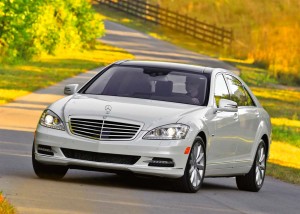At a time when the world auto industry was ready to collapse, the Chinese market offered a rare and desperately sought beacon of hope. Even as demand in the U.S. market plunged to its lowest levels in decades, China continued to deliver double-digit growth, propelling the emerging market to global sales leadership.
Ironically, as the U.S. market recovery begins to heat up, China is showing signs of an unexpected slowdown – one that is proving particularly worrisome in the luxury segment, and which could slam manufacturers like Mercedes-Benz, BMW and Audi who have counted on China for a disproportionate share of their profits in recent years.
For the year-to-date, Chinese light vehicle sales are down a notable 4.4%. The China Association of Automobile Manufacturers now predicts overall sales will only grow by about 5% for the full year – missing the government’s goal of 7%. By global standards, that’s nonetheless significant – but put into perspective it’s clearly worrisome when one recalls recent annual growth rates that, at times, approached 100%.
The situation is particularly worrisome as there continues to be heavy investment into the Chinese market by both foreign and domestic manufacturers – both Subaru and Jaguar Land Rover are now waiting for government approval of proposed joint ventures in China. That could lead to unexpected excess in production capacity – and price warfare.
Bloomberg reports that Mercedes-Benz is cutting prices by as much as 25% on some models, such as the big S600 sedan. Such huge discounts seem “relatively rare,” according to an analysis by Deutsche Bank, but DB analyst Jochen Gehrken warned of “4.5% overall price declines in February for luxury” brands.
That’s particular significant when one considers how heavily luxury makers have come to depend on China. Though the U.S. is still the largest market for highline automotive products, Audi, in particular, reportedly takes 30% of its profits from the Asian nation. Even before it gets its proposed joint venture with Chery Automobile underway, JLR derives 17% of its global sales and as much as a third of its EBITDA earnings from China.
“We have highlighted potential pricing pressure as a key concern in China,” said the bank’s latest analysis, “due to capacity growth.”
Even as signs of a slowdown mount, makers are expected to have capacity in place to produce as many as 21 million light vehicles a year by 2014 or 2015. The figure is currently around 17 million.
Pressure on pricing seems to vary by market segment, General Motors saying it hasn’t faced much pressure to discount. But Deutsche Bank reports prices for domestically made Chinese vehicles have been sliding for months.
Are the glory days over? With virtually every potential player now operating in – or planning to enter – the Chinese market, most analysts believe it will be difficult to deliver the sort of pricing and profits seen when China was in its early growth years. That said, few expect the market to cool down for long.
A new study by consulting firm IHS automotive predicts that China will not only remain the world’s largest car market but could reach a peak of 30 million by the end of the decade.

